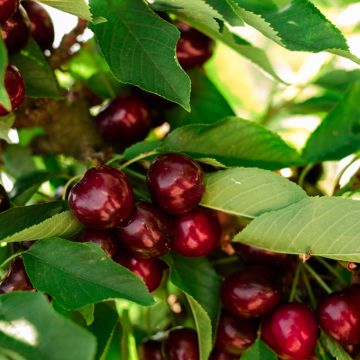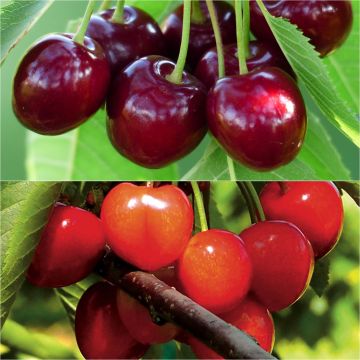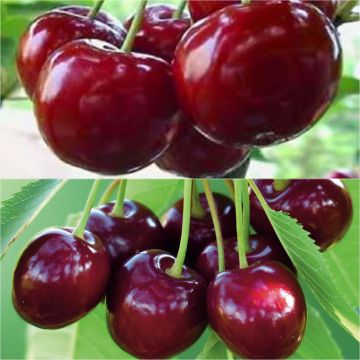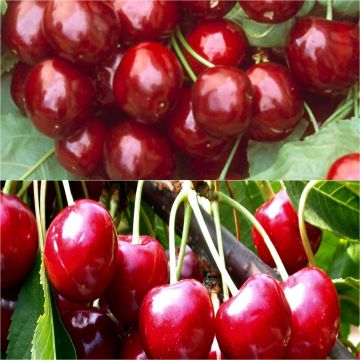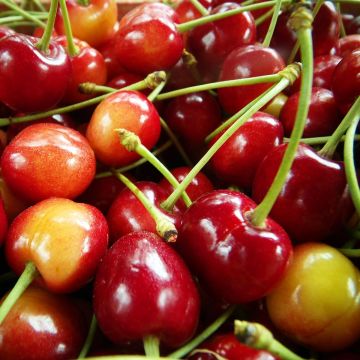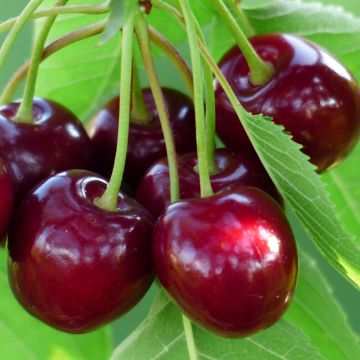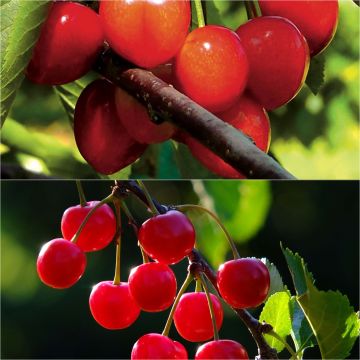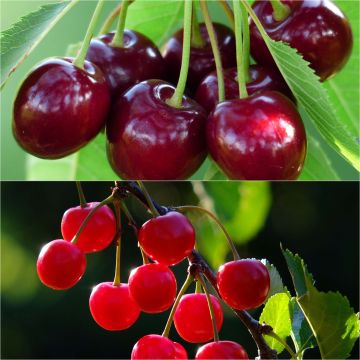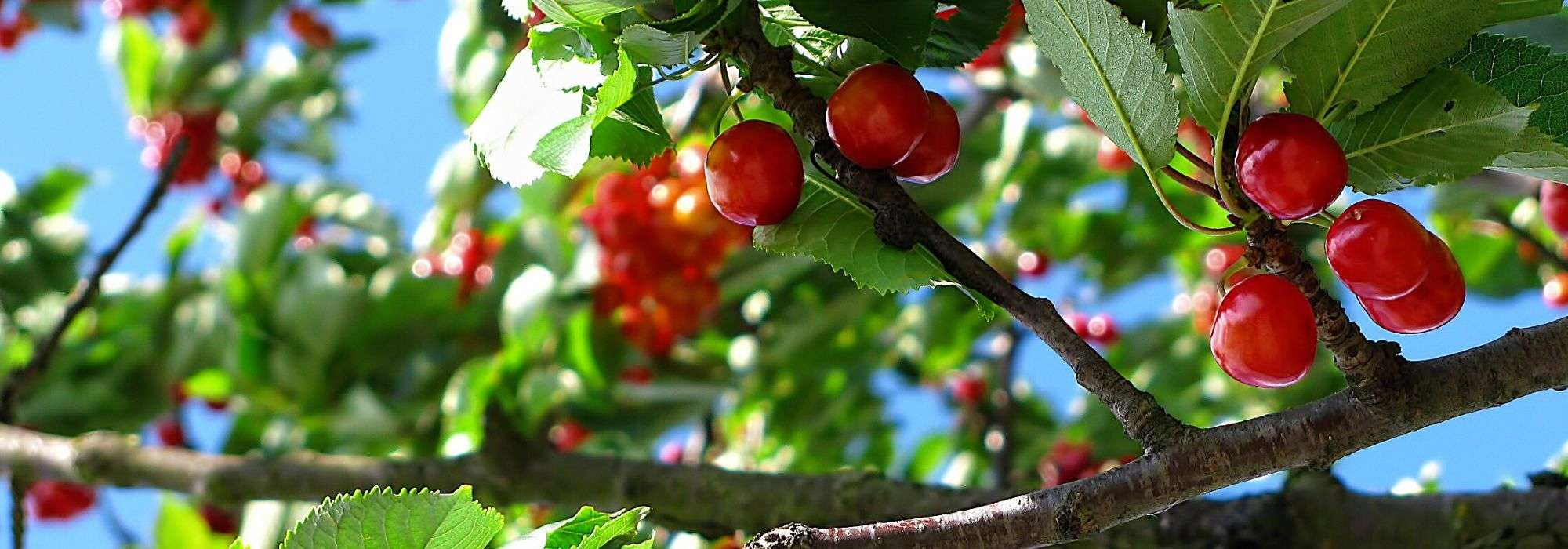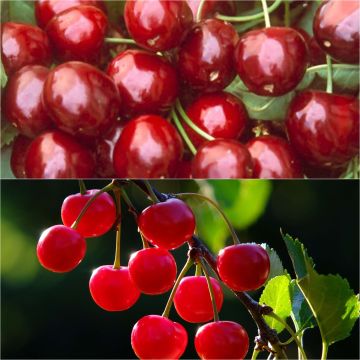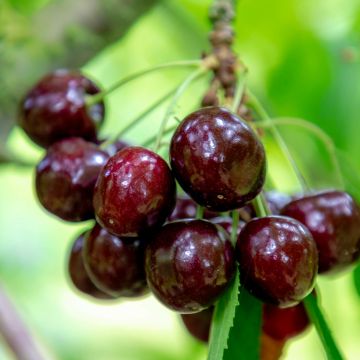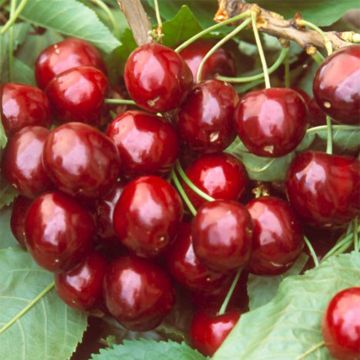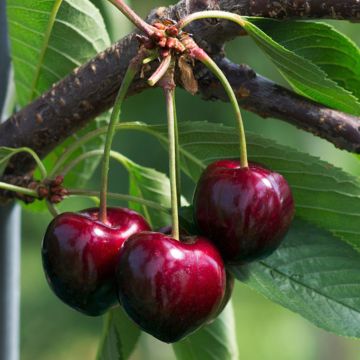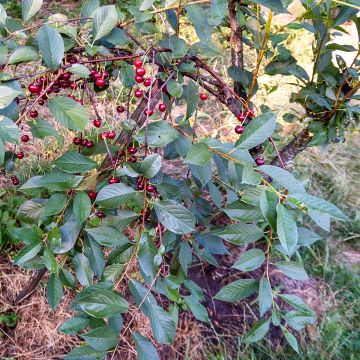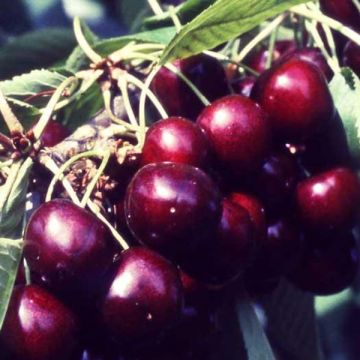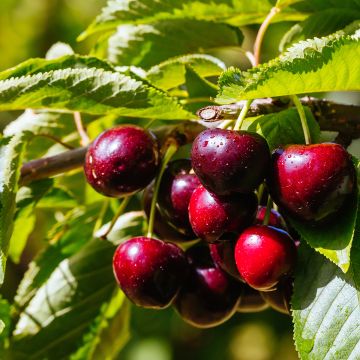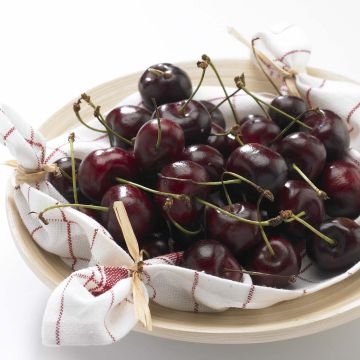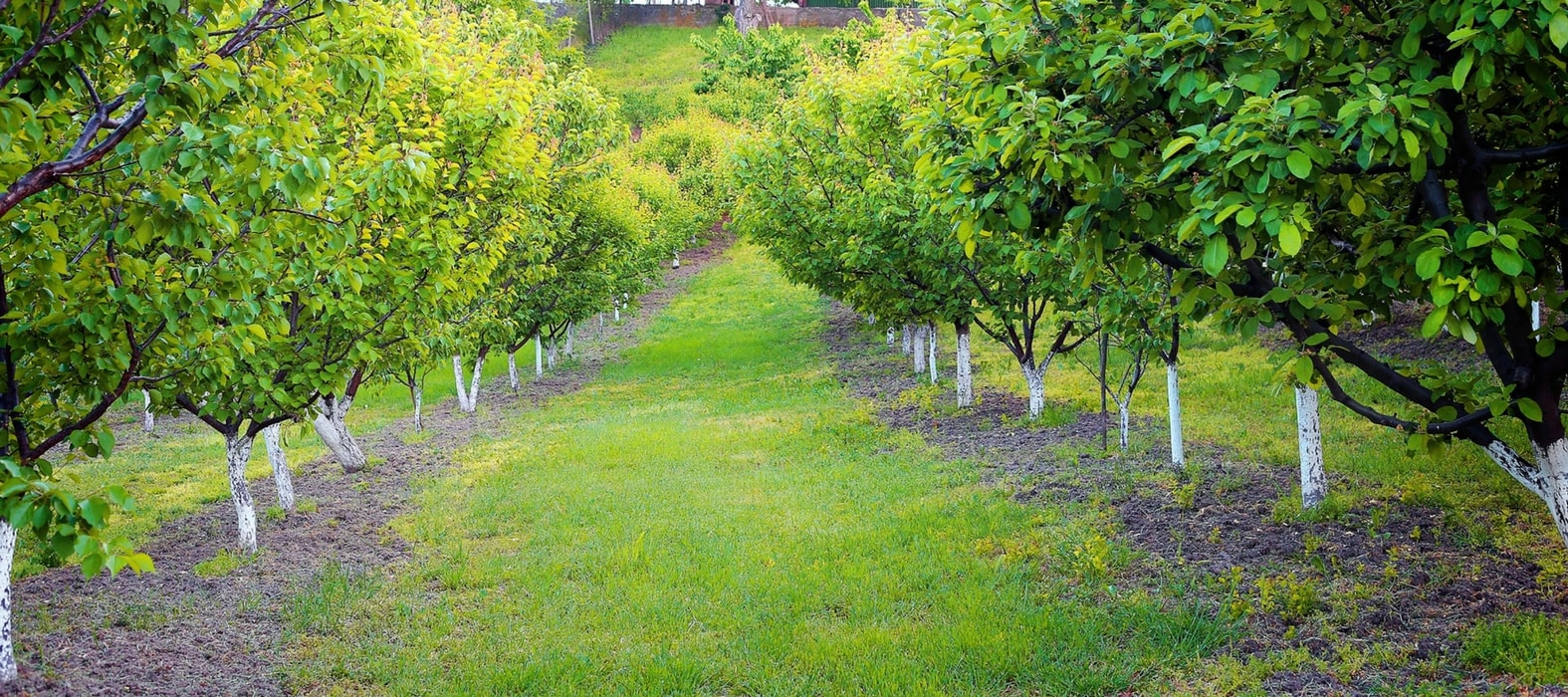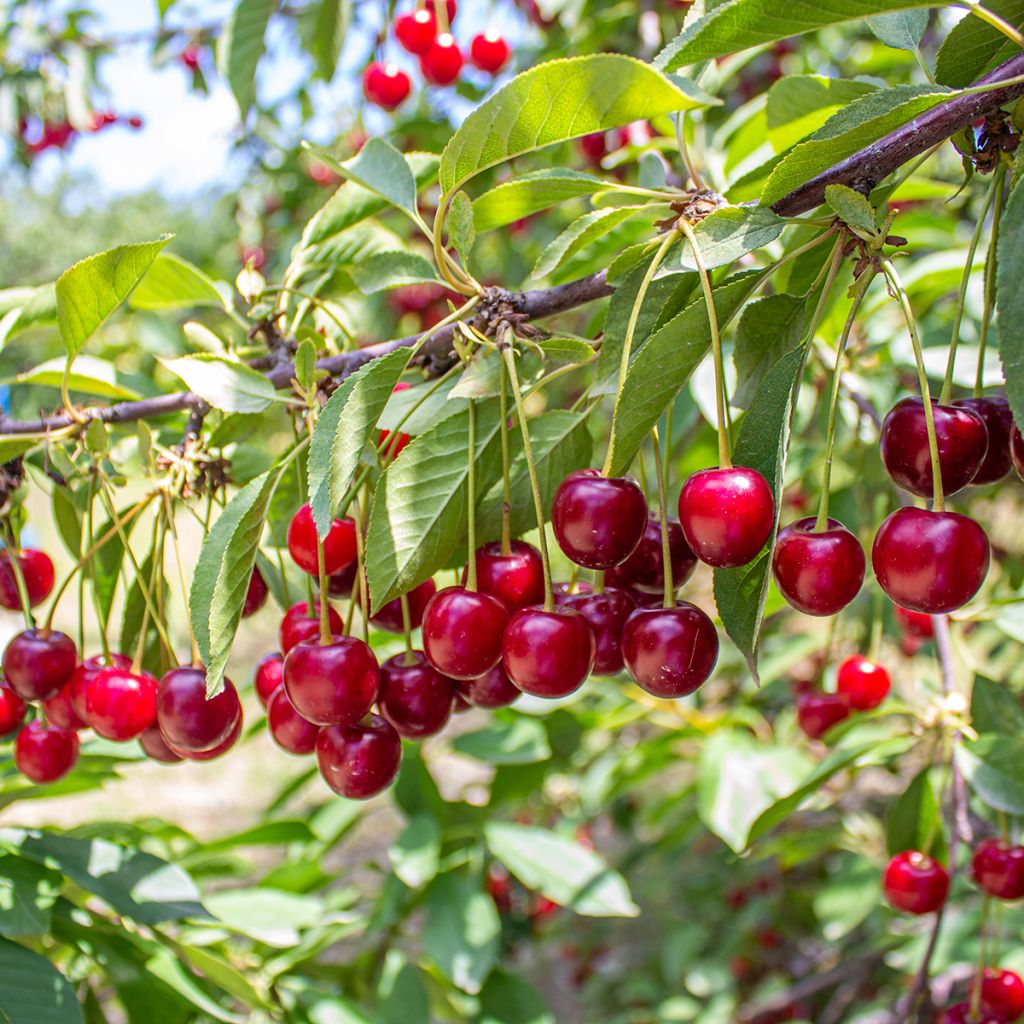

Prunus cerasus Kelleriis16 - Morello Cherry
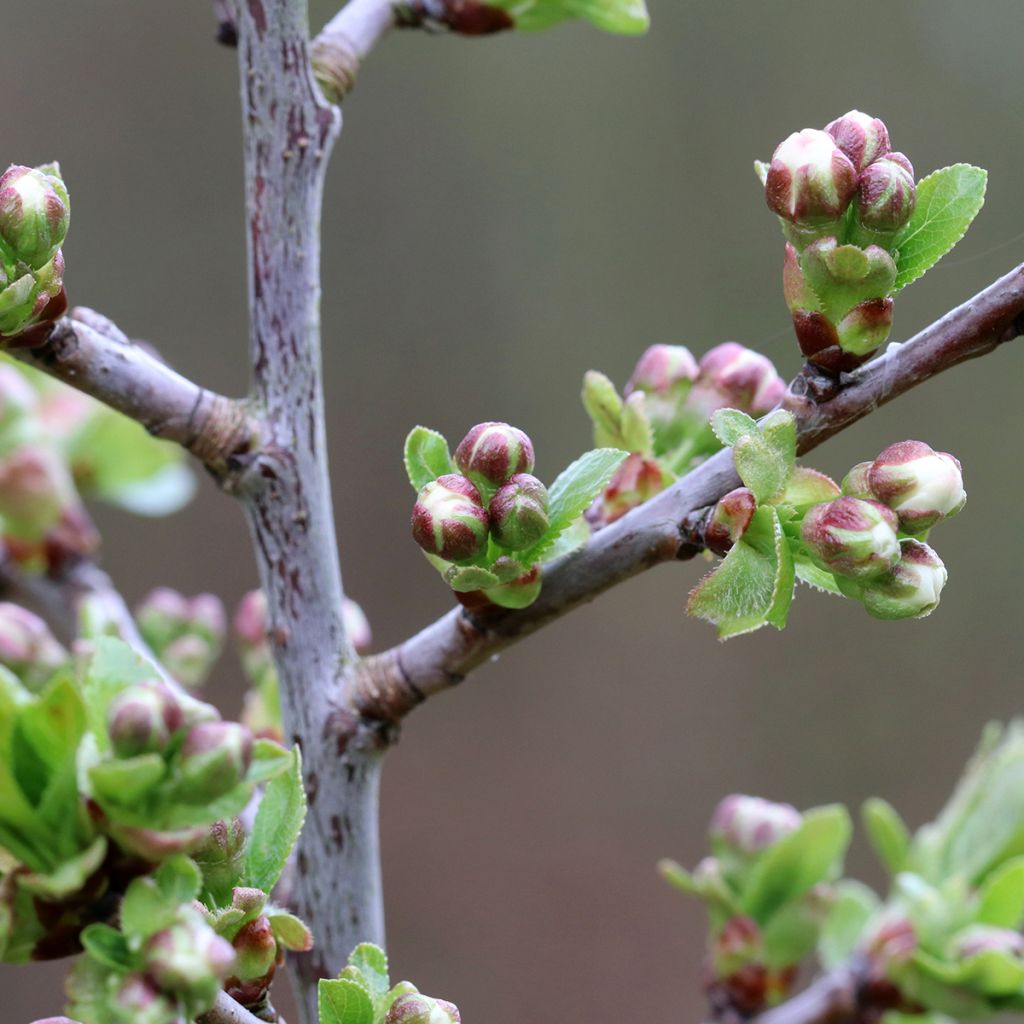

Prunus cerasus Kelleriis16 - Morello Cherry
Prunus cerasus Kelleriis16 - Morello Cherry
Prunus cerasus Kelleriis16
Morello Cherry, Amarelle Cherry, Double wild dwarf cherry, Dwarf Cherry, Sour Cherry
Special offer!
Receive a €20 voucher for any order over €90 (excluding delivery costs, credit notes, and plastic-free options)!
1- Add your favorite plants to your cart.
2- Once you have reached €90, confirm your order (you can even choose the delivery date!).
3- As soon as your order is shipped, you will receive an email containing your voucher code, valid for 3 months (90 days).
Your voucher is unique and can only be used once, for any order with a minimum value of €20, excluding delivery costs.
Can be combined with other current offers, non-divisible and non-refundable.
Why not try an alternative variety in stock?
View all →This plant carries a 6 months recovery warranty
More information
We guarantee the quality of our plants for a full growing cycle, and will replace at our expense any plant that fails to recover under normal climatic and planting conditions.
Description
The Kelleriis 16 or Morellenfeuer Sour Cherry Tree is characterised by its abundant production of fairly large, round fruits, approximately 2 cm in diameter, with a thin, bright red skin that darkens slightly when ripe, enclosing juicy, highly pigmented flesh. The red, firm and slightly acidic flesh, surrounds a white, creamy, hard, smooth, oval stone that contains the seed. The flesh is not strongly attached to the stone, making it easy to use the fruit for processing or cooking. It blooms abundantly between mid-April and early May, and the fruits ripen around mid-July. This disease-resistant, hardy cherry tree (to -20°C) is easy to grow and requires little maintenance. In the garden, this variety easily integrates into a productive or ecological hedge, an orchard, in association with other fruit trees, or as a standalone tree in a lawn. It is best planted in autumn for a harvest in July.
Plant from Organic Agriculture.
Prunus cerasus belongs to the Rosaceae family, like the Sweet Cherry (Prunus avium). Also known as the Sour Cherry or Acid Cherry, it is native to Asia Minor and has been widely grown in Europe since ancient times.
The variety 'Kelleriis16', also known as 'Morellenfeuer', was selected by the company Poulsen Roser (named after its founder Dorus Theus Poulsen) around 1945, near the village of Kelleriis in Kvistgaard, north of Copenhagen, Denmark. It is a cross between the varieties 'Ostheimer Weichel' and 'Früheste der Markt'. This cherry tree forms a small tree with a semi-erect habit, spreading with age, reaching approximately 4 to 6 metres in height and 4 to 5 metres in width at maturity, producing numerous divergent and trailing branches. The reddish wood is characteristic of the cherry tree family. Its habit is well suited for free forms on half-standards or low goblet shapes. The deciduous foliage is composed of large, alternate, obovate leaves, irregularly toothed, shiny green, turning brownish-orange in autumn. Flowering occurs in the second half of April, before the appearance of the leaves, which generally protects it from frost. The pure white, single, 2 to 3 cm diameter flowers are grouped in clusters. They can be destroyed by frost at temperatures between -2 and -3°C. It is a remarkably decorative blossom in spring, particularly rich in nectar and pollen. It is a hardy tree that can withstand temperatures around -20°C. This variety is self-fertile, so it does not require a companion to bear fruit, but the presence of another cherry tree variety nearby will increase productivity.
The Morellenfeuer Cherry Tree is a very productive variety, bearing fruit quickly, around 2 to 3 years, and reaching optimal production after 5 to 6 years. The uniform and abundant harvest may show a tendency for alternate bearing, meaning that a year of high productivity may be followed by a year of lower yield. The fruit is attached to the branch by a relatively short, 3 to 4 cm long stalk. The harvest begins around mid-July and extends until mid-August. It is important to pick the fruits when they are ripe, as they do not ripen further, and with their stems to ensure good storage. Cherries are quite fragile, so they should be harvested carefully. When fully ripe, the juice of the fruits stains hands and clothing. An adult sour cherry tree (between 10 and 20 years old) produces an average of 30 to 50 kilograms of fruit per year.
This sour cherry is very juicy and slightly acidic in taste and can be enjoyed raw, but its flavours are best revealed when cooked or processed. The fruit pulp easily separates from the stone, making it easy to prepare in the kitchen. It is delicious for making clafoutis, cakes, crumbles, or pies, and as an accompaniment to savoury dishes with white meats (turkey, chicken, veal, etc.) or tagines. They are also perfect for making jams, compotes, juices, or preserved in syrup. Not to mention the famous cherry brandy, to be consumed in moderation. Its content of vitamins A, B, and C, phenolic antioxidants, potassium, calcium, and magnesium, with a significant iron contribution, make the sour cherry a healthy choice. The fruits can only be stored for a few days at room temperature. However, they can be frozen once washed, dried, and pitted, or used in preserves.
The Kelleriis16 Sour Cherry Tree can be grown in most regions. Its major asset is the taste quality of its fruits, but it is also very vigorous, hardy, and highly productive. It is quite resistant to diseases and, under favourable conditions, easy to cultivate. It tolerates acidic or slightly alkaline soil, but not excessively so, and prefers a rich, deep, well-drained soil with no excess water and full sun. This cherry tree, with moderate growth, is well suited for medium-sized gardens. It can be planted on a lawn, at the back of a flower bed, in an orchard or a productive hedge, alongside traditional fruit trees such as peach and nectarine trees, apple trees, pear trees, plum trees, or more unique varieties such as Asimina (pawpaw), persimmon (kaki) trees, Nashi pear trees, or even quince trees. It is also possible to associate it with other cherry trees to diversify tastes and uses, as well as extend the harvest period.
Prunus cerasus Kelleriis16 - Morello Cherry in pictures
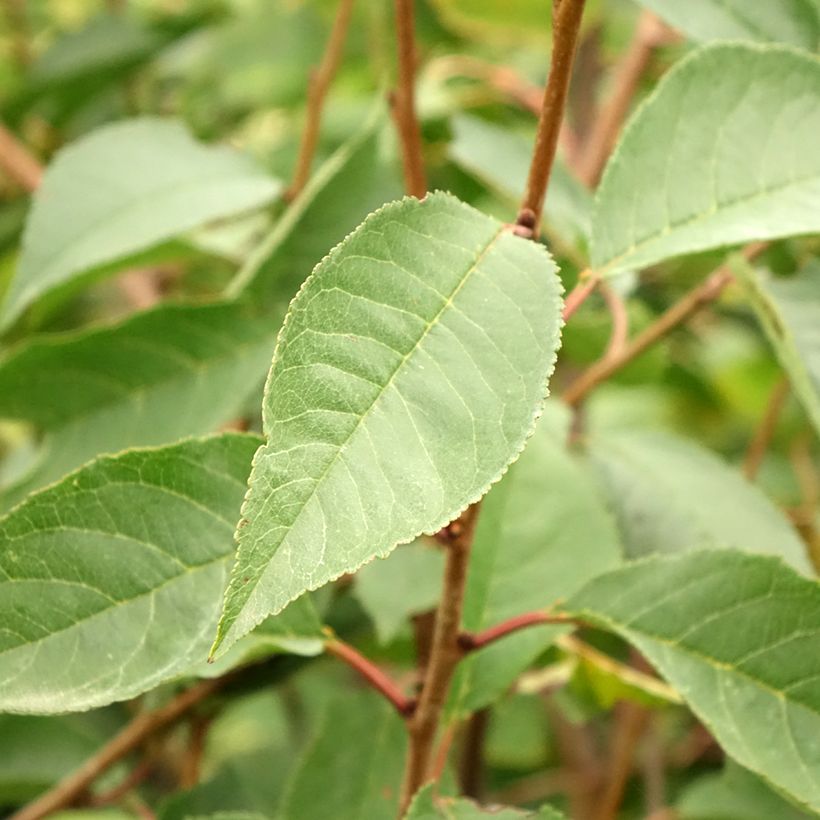

Plant habit
Fruit
Flowering
Foliage
Botanical data
Prunus
cerasus
Kelleriis16
Rosaceae
Morello Cherry, Amarelle Cherry, Double wild dwarf cherry, Dwarf Cherry, Sour Cherry
Cultivar or hybrid
Other Cherry trees
View all →Planting and care
Easy to grow Kelleriis 16 Cherry Tree grows in all types of soil, acidic or chalky. It likes moist, light soils and doesn't like heavy and clayey soils. Choose a sunny exposure. To limit the risks of late frost on the flowers, it is recommended to plant the Cherry Tree in a sheltered position, facing west and protected from cold winds in regions that experience spring frosts. Planting is best done in autumn or in winter, outside the freezing period. If you plant several trees, space them 7 to 10 m apart for "standard" cherry trees, 5 to 7 m apart for "half-standard" cherry trees, and 4 to 5 m apart for goblets.
Loosen the soil deeply, remove stones and unwanted weeds. Add some sand to improve drainage. Dig a hole 4 to 5 times the volume of the root ball. Make sure to separate the subsoil from the surface soil. Mix crushed horn or well-rotted compost or potting soil with the subsoil and pour this mixture into the planting hole. Install a stake. Place the root ball, cover with the surface soil and tamp down well. Water generously (about 10 litres). Position your tie system, crossing it in a figure of 8, so that the trunk and the stake do not rub against each other.
During cultivation, watering is not necessary except in case of high heat. Mulch at the base to keep it moist in summer. Protect your harvest with a bird net, aluminum foil or old CDs.
The cherry tree can be subject to various diseases and pests. Against grey rot (velvety rot on fruits) and moniliosis (drying of flowers and rotting of fruits on the tree), remove and burn the affected parts curatively, and spray Bordeaux mixture or decoctions of horsetail or garlic preventively, at the beginning of spring and autumn. Against bacterial canker (drying of floral bouquets, brown spots, deformation of the bark), spray Bordeaux mixture. As for pests, the cherry fly or fruit worm can be controlled preventively by installing yellow cardboard discs covered with glue in spring, or pheromone traps (trapping male insects), or a Drosophila trap, easy to make from a plastic bottle. In case of black aphid attack, spray a mixture of water and black soap or water and vegetable oil.
Planting period
Intended location
Care
Planting & care advice
This item has not been reviewed yet - be the first to leave a review about it.
Haven't found what you were looking for?
Hardiness is the lowest winter temperature a plant can endure without suffering serious damage or even dying. However, hardiness is affected by location (a sheltered area, such as a patio), protection (winter cover) and soil type (hardiness is improved by well-drained soil).

Photo Sharing Terms & Conditions
In order to encourage gardeners to interact and share their experiences, Promesse de fleurs offers various media enabling content to be uploaded onto its Site - in particular via the ‘Photo sharing’ module.
The User agrees to refrain from:
- Posting any content that is illegal, prejudicial, insulting, racist, inciteful to hatred, revisionist, contrary to public decency, that infringes on privacy or on the privacy rights of third parties, in particular the publicity rights of persons and goods, intellectual property rights, or the right to privacy.
- Submitting content on behalf of a third party;
- Impersonate the identity of a third party and/or publish any personal information about a third party;
In general, the User undertakes to refrain from any unethical behaviour.
All Content (in particular text, comments, files, images, photos, videos, creative works, etc.), which may be subject to property or intellectual property rights, image or other private rights, shall remain the property of the User, subject to the limited rights granted by the terms of the licence granted by Promesse de fleurs as stated below. Users are at liberty to publish or not to publish such Content on the Site, notably via the ‘Photo Sharing’ facility, and accept that this Content shall be made public and freely accessible, notably on the Internet.
Users further acknowledge, undertake to have ,and guarantee that they hold all necessary rights and permissions to publish such material on the Site, in particular with regard to the legislation in force pertaining to any privacy, property, intellectual property, image, or contractual rights, or rights of any other nature. By publishing such Content on the Site, Users acknowledge accepting full liability as publishers of the Content within the meaning of the law, and grant Promesse de fleurs, free of charge, an inclusive, worldwide licence for the said Content for the entire duration of its publication, including all reproduction, representation, up/downloading, displaying, performing, transmission, and storage rights.
Users also grant permission for their name to be linked to the Content and accept that this link may not always be made available.
By engaging in posting material, Users consent to their Content becoming automatically accessible on the Internet, in particular on other sites and/or blogs and/or web pages of the Promesse de fleurs site, including in particular social pages and the Promesse de fleurs catalogue.
Users may secure the removal of entrusted content free of charge by issuing a simple request via our contact form.
The flowering period indicated on our website applies to countries and regions located in USDA zone 8 (France, the United Kingdom, Ireland, the Netherlands, etc.)
It will vary according to where you live:
- In zones 9 to 10 (Italy, Spain, Greece, etc.), flowering will occur about 2 to 4 weeks earlier.
- In zones 6 to 7 (Germany, Poland, Slovenia, and lower mountainous regions), flowering will be delayed by 2 to 3 weeks.
- In zone 5 (Central Europe, Scandinavia), blooming will be delayed by 3 to 5 weeks.
In temperate climates, pruning of spring-flowering shrubs (forsythia, spireas, etc.) should be done just after flowering.
Pruning of summer-flowering shrubs (Indian Lilac, Perovskia, etc.) can be done in winter or spring.
In cold regions as well as with frost-sensitive plants, avoid pruning too early when severe frosts may still occur.
The planting period indicated on our website applies to countries and regions located in USDA zone 8 (France, United Kingdom, Ireland, Netherlands).
It will vary according to where you live:
- In Mediterranean zones (Marseille, Madrid, Milan, etc.), autumn and winter are the best planting periods.
- In continental zones (Strasbourg, Munich, Vienna, etc.), delay planting by 2 to 3 weeks in spring and bring it forward by 2 to 4 weeks in autumn.
- In mountainous regions (the Alps, Pyrenees, Carpathians, etc.), it is best to plant in late spring (May-June) or late summer (August-September).
The harvesting period indicated on our website applies to countries and regions in USDA zone 8 (France, England, Ireland, the Netherlands).
In colder areas (Scandinavia, Poland, Austria...) fruit and vegetable harvests are likely to be delayed by 3-4 weeks.
In warmer areas (Italy, Spain, Greece, etc.), harvesting will probably take place earlier, depending on weather conditions.
The sowing periods indicated on our website apply to countries and regions within USDA Zone 8 (France, UK, Ireland, Netherlands).
In colder areas (Scandinavia, Poland, Austria...), delay any outdoor sowing by 3-4 weeks, or sow under glass.
In warmer climes (Italy, Spain, Greece, etc.), bring outdoor sowing forward by a few weeks.






























